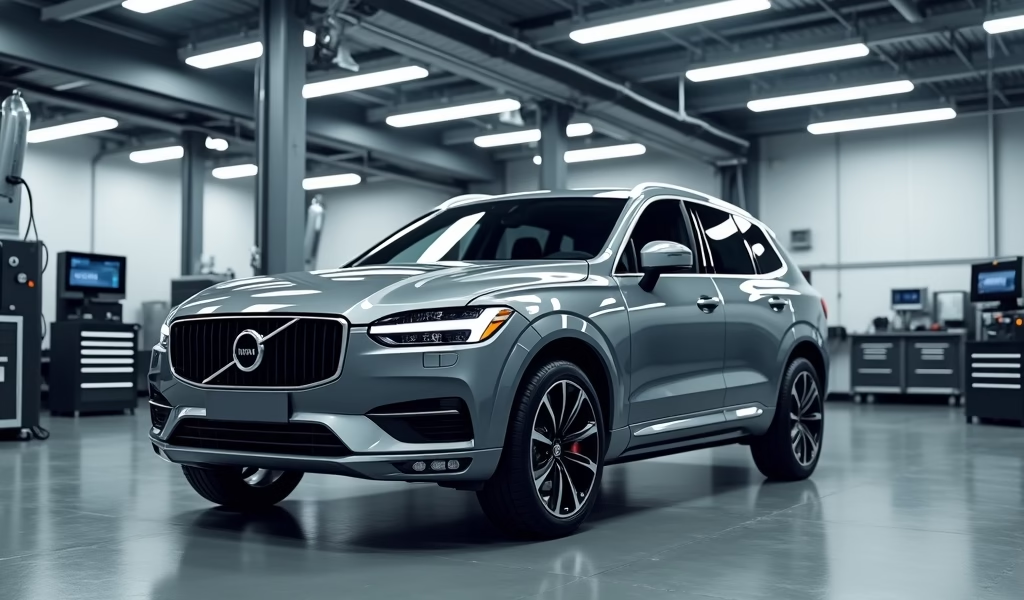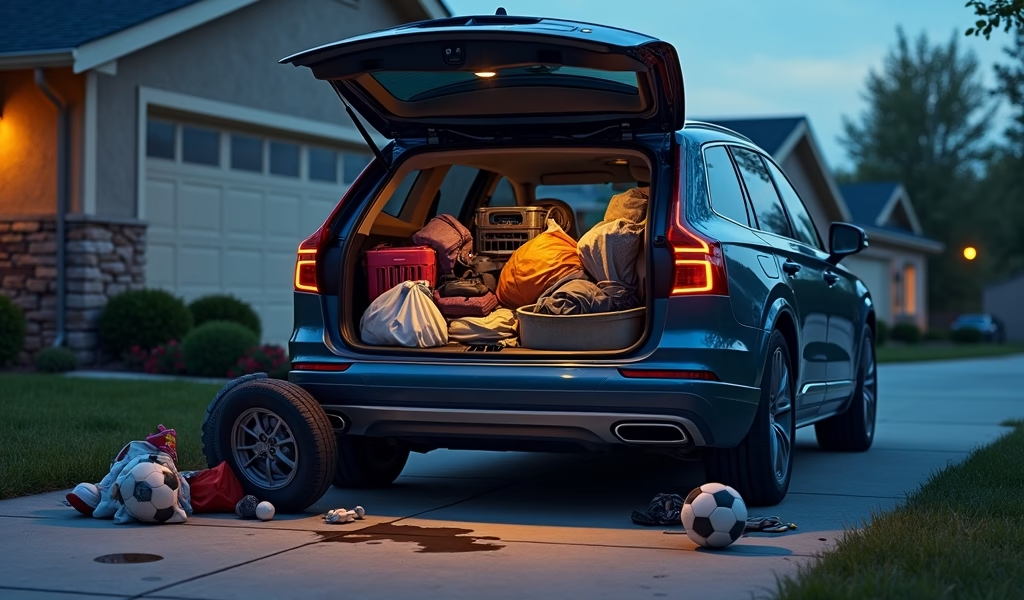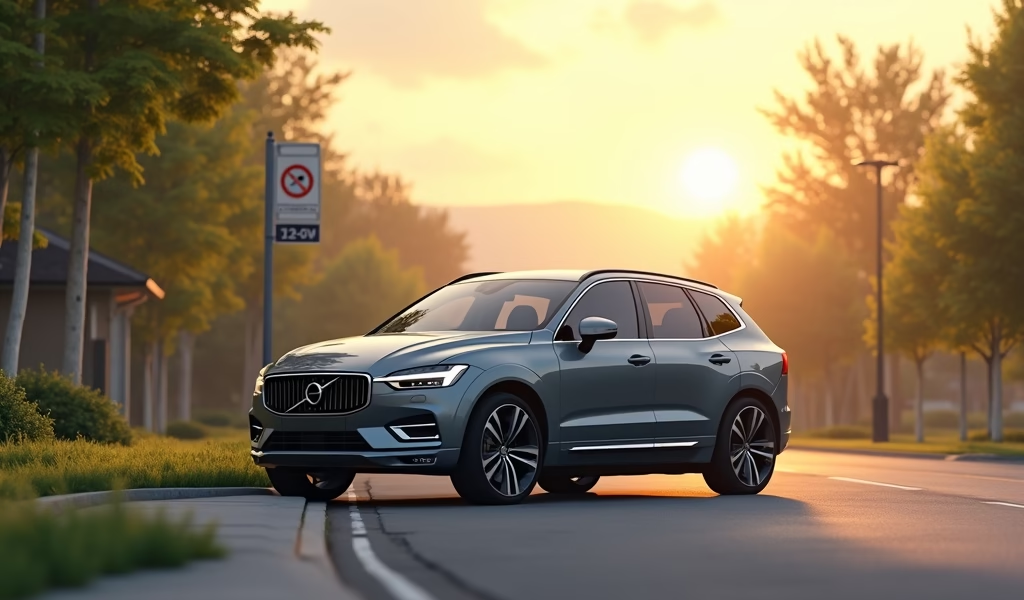Overview
This article explores the essential factors for choosing the ideal family vehicle across various categories including SUVs, minivans, sedans, and electric options, with detailed analysis of safety features and budget considerations. The guide emphasizes that the perfect family car depends on each family’s specific needs, driving habits, and priorities rather than following market trends.
Table of Contents
- What Makes a Family Car Great?
- SUVs and Crossovers: The Popular Choice
- Minivans: The Practical Champions
- Sedans and Wagons: Don’t Count Them Out
- Electric and Hybrid Options
- Essential Safety Features
- Budget Considerations
- Conclusion
- Frequently Asked Questions
Finding the perfect family car isn’t as straightforward as it once was. With countless options spanning multiple vehicle categories, choosing what’s best for your family’s needs can feel overwhelming. As someone who’s spent 20+ years under the hood and helping families select vehicles that match their lifestyle, I’ve seen firsthand how the right car can make family life smoother – and how the wrong one can create daily frustrations.
The best family car these days isn’t a one-size-fits-all answer. It depends entirely on your specific family situation, driving habits, budget, and priorities. Some families need maximum space for equipment and multiple children, while others prioritize fuel efficiency or all-weather capability.
Let’s break down the options and help you find the perfect four-wheeled family member to add to your household.
What Makes a Family Car Great?
Before diving into specific models and types, let’s establish what truly matters in a family vehicle:
- Space and versatility for passengers and cargo
- Safety features and crash test ratings
- Reliability and low maintenance costs
- Fuel efficiency or range (for electric vehicles)
- Comfort features for long trips
- Technology that enhances convenience and safety
- Value retention and total cost of ownership
The ideal family car needs to balance these elements while matching your specific needs. A family with three kids and sports equipment has different requirements than a family with a single child in an urban environment.
One often-overlooked aspect is how easy the vehicle makes daily family life. Can you easily install and remove car seats? Is there enough room between seats when multiple car seats are installed? Are the interior materials durable and easy to clean? These practical considerations often matter more in the long run than fancy features.

SUVs and Crossovers: The Popular Choice
SUVs and crossovers currently dominate the family car market, and for good reason. They offer a compelling blend of passenger space, cargo capacity, and the higher seating position many parents prefer for visibility.
Compact Crossovers
For smaller families or those in urban environments, compact crossovers like the Honda CR-V, Toyota RAV4, and Mazda CX-5 provide excellent value. They deliver car-like fuel economy with added versatility and available all-wheel drive.
The Honda CR-V particularly shines with its exceptional space efficiency. Despite its modest exterior dimensions, it offers surprisingly generous rear seat room and cargo capacity. The hybrid version provides excellent fuel economy without sacrificing utility.
Midsize SUVs
If you need more space or occasionally transport additional passengers, midsize options like the Honda Pilot, Toyota Highlander, and Kia Telluride offer three rows of seating without the bulk of larger SUVs.
The Kia Telluride has been a standout since its introduction, offering near-luxury appointments and exceptional comfort at mainstream pricing. Its spacious third row can actually accommodate adults – a rarity in this segment – making it ideal for growing families or carpooling duties.
Full-Size SUVs
For large families or those regularly hauling substantial cargo, full-size SUVs like the Chevrolet Tahoe, Ford Expedition, and Toyota Sequoia provide maximum space and capability, including serious towing capacity.
These vehicles excel on long road trips, where their stable highway manners and abundant space keep everyone comfortable. However, they come with tradeoffs in fuel efficiency and maneuverability, especially in tight urban parking.
SUVs offer excellent all-weather capability when equipped with all-wheel drive, making them popular choices in regions with severe winter weather. Their higher ground clearance also provides peace of mind on rough roads or during occasional light off-road adventures.
For families considering used options, SUVs from 2-3 years ago often represent excellent value as they’ve already experienced their steepest depreciation while still offering modern safety features.
Minivans: The Practical Champions
Let’s address the elephant in the room: minivans suffer from an image problem. But as a mechanic who’s worked on thousands of family vehicles, I can tell you without hesitation that minivans remain the most practical family vehicles on the market.
Modern minivans like the Honda Odyssey, Chrysler Pacifica, and Toyota Sienna offer unmatched interior space, flexible seating configurations, and family-friendly features that SUVs simply can’t match.
Why Minivans Excel for Families
- Sliding doors prevent door dings and make loading kids in tight parking spaces easier
- Lower step-in height compared to SUVs helps children climb in independently
- Superior space efficiency with genuinely useful third rows
- Innovative storage solutions throughout the cabin
- Better fuel economy than comparably sized SUVs
The Chrysler Pacifica offers the innovative Stow ‘n Go seating that allows second-row seats to fold completely into the floor – perfect for quickly switching between maximum passenger capacity and cargo hauling. The Toyota Sienna comes exclusively as a hybrid with impressive fuel economy (up to 36 mpg combined) and available all-wheel drive.
If you regularly transport multiple children, especially in car seats, or frequently need to switch between passenger and cargo configurations, no other vehicle type offers the practical advantages of a minivan. They simply make family life easier.
For families seeking reliable used cars with maximum utility, the Honda Odyssey and Toyota Sienna have proven track records of durability and longevity, often reaching 200,000+ miles with proper maintenance.
Sedans and Wagons: Don’t Count Them Out
While SUVs and minivans dominate family car discussions, don’t overlook traditional sedans and wagons. For families with one or two children who don’t need massive cargo capacity, these options offer significant advantages.
The Case for Sedans
Modern midsize sedans like the Toyota Camry, Honda Accord, and Mazda6 offer generous rear seat space, large trunks, and excellent fuel efficiency. Their lower center of gravity provides better handling and stability than taller vehicles, and their lighter weight contributes to better acceleration and braking performance.
The Honda Accord particularly stands out with its combination of responsive driving dynamics, spacious interior, and impressive fuel economy. Its rear seat legroom rivals some full-size sedans, making it perfectly suitable for family duty.
Wagon Versatility
Station wagons combine sedan-like driving dynamics with SUV-rivaling cargo space. The Subaru Outback has mastered this formula with its standard all-wheel drive and elevated ground clearance that provides SUV capability without the bulk.
European options like the Volvo V60 and Audi A4 Allroad offer premium appointments with practical utility. These wagons excel on winding roads while still accommodating family gear.
For families in urban environments or those who prioritize driving enjoyment, sedans and wagons deserve serious consideration. They’re typically less expensive than comparable SUVs and offer lower operating costs due to better fuel efficiency.

Electric and Hybrid Options
The family car market has been transformed by electric and hybrid options that offer significant fuel savings without compromising family-friendly features.
Hybrid Family Cars
Hybrid powertrains are now available across virtually all vehicle categories. The Toyota RAV4 Hybrid and Honda CR-V Hybrid deliver exceptional fuel economy in the popular compact crossover segment. The Toyota Sienna comes exclusively as a hybrid, making it the most fuel-efficient minivan ever produced.
Plug-in hybrids like the Toyota RAV4 Prime and Chrysler Pacifica Hybrid offer the best of both worlds – electric-only range for short daily drives and hybrid operation for longer trips. The RAV4 Prime provides 42 miles of electric-only range before switching to hybrid mode, potentially allowing many families to complete daily commutes and errands without using any gasoline.
All-Electric Family Vehicles
Fully electric vehicles have evolved beyond small commuter cars to include genuine family-friendly options. The Tesla Model Y offers crossover versatility with impressive range (up to 330 miles) and access to Tesla’s extensive Supercharger network. The Ford Mustang Mach-E combines sporty performance with family practicality.
For larger families, the Kia EV9 and Rivian R1S offer three-row seating with all-electric powertrains. These vehicles demonstrate that electric vehicles can now serve virtually all family transportation needs.
When considering electric options, evaluate your daily driving patterns and charging infrastructure. Most electric vehicle owners charge at home overnight, but access to convenient charging becomes important for longer trips. If your family regularly drives beyond the vehicle’s range, consider whether the charging network in your region can support your travel needs.
The total cost equation for electric and hybrid vehicles has improved dramatically. While purchase prices may be higher, reduced fuel and maintenance costs often make them financially advantageous over the vehicle’s lifetime, especially for high-mileage drivers.
Essential Safety Features
When it comes to family cars, safety isn’t just another feature – it’s the foundation of your purchase decision. Modern vehicles offer incredible safety technology that wasn’t available even a few years ago.
Must-Have Safety Features
- Automatic Emergency Braking (AEB) with pedestrian detection
- Blind spot monitoring system
- Rear cross-traffic alert
- Lane departure warning and lane-keeping assist
- Adaptive cruise control
- 360-degree camera systems (especially helpful for larger vehicles)
These active safety features work to prevent accidents before they happen, complementing the passive protection provided by airbags and crumple zones. Many families find adaptive cruise control particularly valuable on highway trips, as it reduces driver fatigue while maintaining safe following distances.
Always check the safety ratings from both the Insurance Institute for Highway Safety (IIHS) and the National Highway Traffic Safety Administration (NHTSA). The IIHS Top Safety Pick+ designation represents the highest safety standard and considers both crash protection and crash prevention technologies.
For families with young children, evaluate how easily car seats can be installed using the LATCH (Lower Anchors and Tethers for Children) system. Some vehicles have more accessible anchors or more spacious rear seats that accommodate multiple car seats better than others.
Budget Considerations
The perfect family car needs to fit your financial situation as well as your lifestyle needs. Looking beyond the sticker price helps reveal the true cost of ownership.
Total Cost of Ownership
Consider these factors when evaluating the long-term financial impact:
- Depreciation (typically the largest expense of ownership)
- Fuel or energy costs based on your typical driving patterns
- Insurance premiums (which vary significantly between models)
- Maintenance and repair costs
- Financing costs over the loan term
Vehicles with strong reliability histories typically cost less to own over time, even if their initial purchase price is higher. Brands like Toyota, Honda, and Mazda consistently score well in reliability surveys and tend to hold their value better than average.
Don’t overlook certified pre-owned (CPO) options from reputable manufacturers. These best used cars often offer the perfect balance of modern safety features, remaining warranty coverage, and reduced depreciation costs.
Finding Value in Different Segments
If your budget is tight, consider how different vehicle types deliver value in different ways:
Sedans typically offer the lowest purchase price and operating costs for comparable feature sets. Minivans provide maximum space and versatility per dollar spent. Compact crossovers balance affordability with versatility better than larger SUVs.
For growing families, consider how long you’ll keep the vehicle and whether your needs might change. Sometimes spending slightly more initially on a larger or more versatile vehicle saves money compared to trading up sooner than planned.
Conclusion
The best family car these days isn’t defined by a specific make or model – it’s the one that most perfectly matches your family’s unique combination of needs, preferences, and budget. A vehicle that excels for a suburban family of five might be completely wrong for a city-dwelling family of three.
When searching for your ideal family car, start by honestly assessing your daily needs and occasional requirements. Consider factors like the number and age of your children, typical cargo needs, driving conditions in your area, and how long you plan to keep the vehicle. Then narrow your search to the vehicle type that best addresses those needs.
Test drive multiple options within your chosen category, and bring the whole family if possible. Pay attention to how easily children can enter and exit, how well car seats fit, and whether the cargo area accommodates your typical gear.
Remember that the best family car is one that fades into the background of daily life – reliably and safely getting everyone where they need to go without creating additional stress or financial strain. Whether that’s a practical minivan, versatile SUV, efficient sedan, or forward-looking electric vehicle depends entirely on your family’s specific situation.
By focusing on your actual needs rather than marketing trends, you’ll find a family vehicle that serves you well for years to come.
Frequently Asked Questions
What’s the safest type of family car?
Modern midsize and large SUVs, minivans, and sedans with top safety ratings all provide excellent protection. Look specifically for IIHS Top Safety Pick+ and NHTSA 5-star rated vehicles with comprehensive driver assistance technology packages.
Are minivans really better than SUVs for families?
For pure functionality with multiple children, especially in car seats, minivans offer unmatched practicality with their sliding doors, lower step-in height, and flexible interiors. SUVs provide better all-weather capability and towing capacity if those factors matter to your family.
Should I consider an electric vehicle for my family?
Electric vehicles make excellent family cars if they match your driving patterns and you have reliable charging access. Consider your typical daily mileage, charging options at home and work, and whether the available range accommodates occasional longer trips.
What’s the most affordable family car with good safety features?
Compact sedans like the Honda Civic and Toyota Corolla now come standard with advanced safety features while maintaining low purchase prices and operating costs. For more space, the Mazda CX-30 crossover offers exceptional safety features at a competitive price point.
How important is all-wheel drive for a family car?
All-wheel drive provides valuable traction benefits in snow, rain, and on unpaved roads, but isn’t essential in milder climates. Front-wheel drive with good winter tires often performs better in snow than all-wheel drive with all-season tires.

